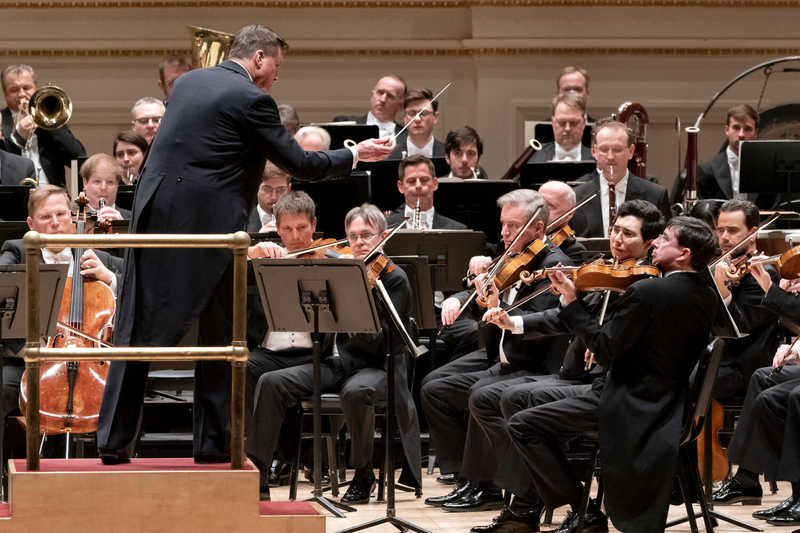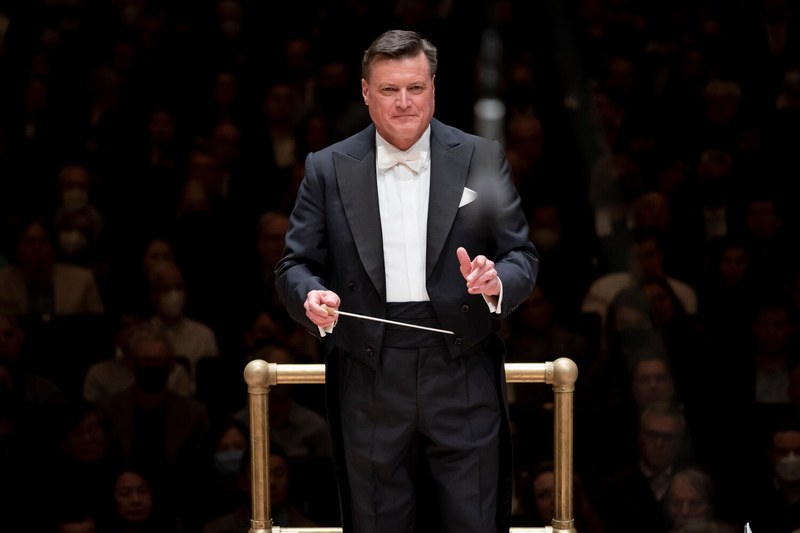Review: The Vienna Philharmonic, Bruckner 8th at Carnegie Hall
Thielemann and Co. Take on the Bruckner 8th.


As I sat in Carnegie Hall on Sunday afternoon, awaiting Christian Thielemann and his mighty Vienna Philharmonic's final performance of a three-concert visit, I waxed nostalgic and drifted back to my very first hearing of the day's featured piece: Bruckner 8th. In 1989, I saw (for the only time live) Herbert Von Karajan with this same Vienna Philharmonic deliver a blistering performance of the piece.
On Sunday, the performance was not blistering, but it was wonderful. Clocking in at just under an hour and a half, one might have had the impression the tempo was dragging, but through detailed shaping of the phrasing and an extraordinary sense of dynamics, the music never came close to dragging.
The conductor stood silently and still as a stone for about 30 seconds after facing his orchestra (a la Mitropoulos, who said he'd often wait as long as a minute for an audience to completely settle down and focus its attention). For the first few milliseconds of the performance, the orchestra did not sound together. For the next 90 minutes they were rock solid, displaying the uber rare combination of almost super-human precision, and ravishing tone. Thielemann drew extremely expressive playing successively from each section of the orchestra. His textures were creamy, yet transparent, to a degree rarely heard in the work.

In fact, there was something different about the mix and blend of the sound. It was hard to recall any orchestra in the magnificent hall having such a fresh sounding mix. It took a few minutes, but suddenly I realized that the orchestra was set up in a unusual fashion. Maestro Thielemann placed his double basses stage right rather than the usual stage left. And placed the celli center stage and the violas stage left. This unique set up created a fresh blend to the sound as it came off the stage and floated across the auditorium.
From the very downbeat, waves of anguish and darkness flooded the music. The passion of the playing belied the razor-sharp precision, creating a magically organic union of orchestra and conductor. Thielemann uses the absolute least amount of physical direction imaginable - often not raising his hands higher than his waist. He leaned backwards and forwards and seemed to cue the players with glances rather than pointing with his hands, a level of sympatico not often seen.

The beginning of the first movement's interplay between the woodwinds and the brass deftly transitioned from deeply somber to defiant and finally exultant. Thielemann coaxed a growing tension from the strings through increasingly present pizzicatos which finally gave way to the first brilliant expression of the main theme in the brass. The powerful fortissimo statement provided both release and increasing mystery - such is the genius of Bruckner.
But the joy of Bruckner is that his symphonies take the listener on a journey - a journey often filled with darkness, introspection and pain - however it almost inevitably, ultimately delivers a manifestly hopeful message, often bordering on spiritual extasy. And this was no exception.
This extasy was full display in the epic fourth movement. There was a controlled, reckless-abandon in the playing that was most certainly by design, that provided a brilliant thrilling energy.
After a number of curtain calls, Thielemann returned to the podium for a brief but delightful encore of Josef Strauss' Sphärenklänge Walzer. But in true Vienna Philharmonic, even the encore was delivered with brilliant energy and loving, attention detail.
-PETER DANISH
Reader Reviews
Videos

